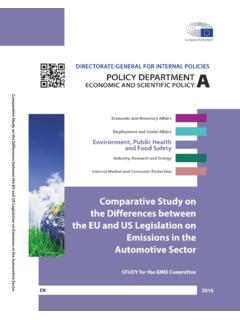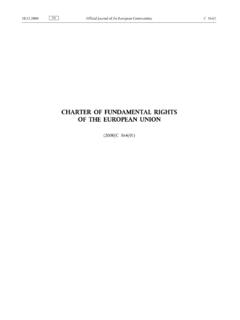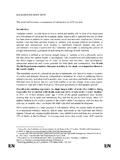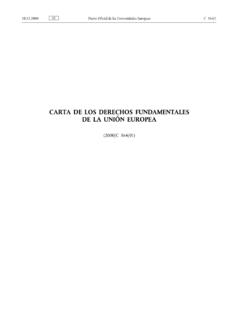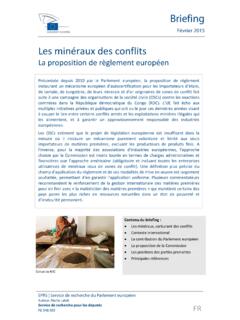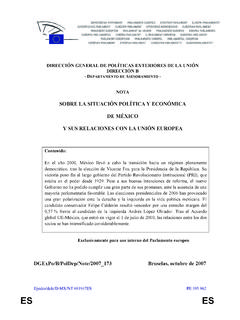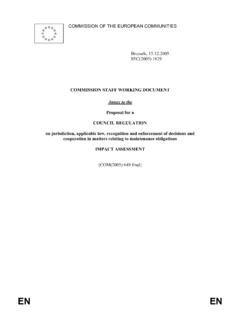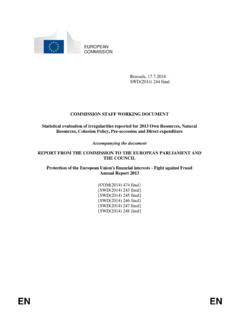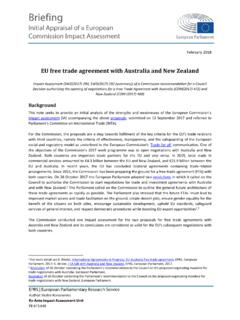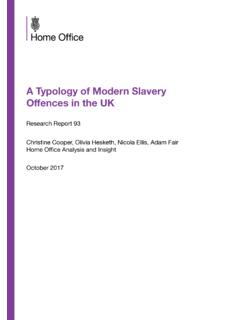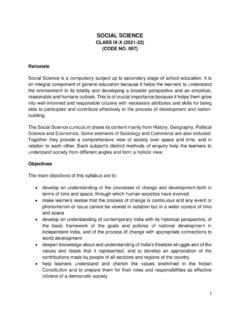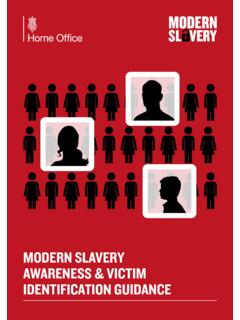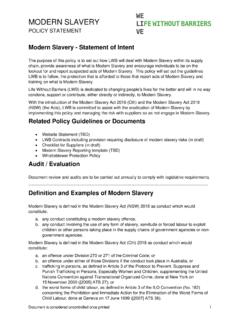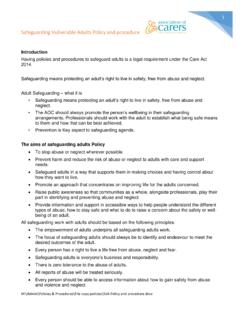Transcription of Workers' conditions in the textile and clothing sector ...
1 Workers' conditions in the textile and clothing sector : just an Asian affair? Issues at stake after the Rana Plaza tragedy SUMMARY More than 70% of EU imports of textile and clothing come from Asia. Many Asian workers have to work in sweatshop conditions , but the issue appears in global media only when major fatal accidents occur, like that at Rana Plaza in Bangladesh, in 2013. Long working hours, low wages, lack of regular contracts, and systemically hazardous conditions are often reported. Trade unions, when allowed, are unable to protect workers. Not all Asian countries exporting textile and clothing to the EU have ratified "Fundamental" ILO conventions and their concrete application is far from the norm.
2 UN Guiding Principles on Business and Human Rights, and OECD Guidelines for Multinational Enterprises fix good standards of corporate social responsibility for Western brands operating in such countries, but are not binding and do not provide for sanctions if not applied. In practice, they have failed to defend workers' rights. A number of measures have been suggested to change this situation, including in repeated European Parliament resolutions. Such measures would require action by Asian governments, international brands and the importing countries. They include greater union rights, more regular work, brands doing more due diligence when dealing with contractors, efficient and more cooperative audits, more stable purchasing practices, making some guidelines and principles legally binding, and putting pressure on Asian authorities to have workers' human rights better respected.
3 In this briefing: Issue Importance of the sector in Asia Workers' conditions in some Asian countries International conventions and guidelines EU policy The European Parliament Ideas for improvement Main references EPRS Workers' conditions in the textile and clothing sector Members' Research Service Page 2 of 10 Glossary textile : any fabric or cloth, especially woven. Apparel, clothing , garment: terms for something that is worn by a person. Offshoring: the practice of moving a company's operating base to a country where labour costs are cheaper. Reshoring: the return of some work to plants based in the country where most sales are made.
4 Sweatshop: (or sweat factory) a negatively connoted term for a working environment considered to be unacceptably difficult or dangerous. Sweatshop employees often work long hours for low wages. ILO: International Labour Organisation, the only multilateral body bringing together representatives of governments, employers and workers at world level. Living wage: a living wage is one that permits a basic, but decent, lifestyle considered acceptable by society at its current level of economic development, such that workers and their families are able to live above the poverty level and participate in social and cultural life.
5 Watchdog: an independent organisation set up to police a particular industry, ensuring that member companies do not act illegally. Issue According to the World Trade Organisation (WTO), Asia alone accounts for of world clothing and textile exports. More than 70% of EU imports of textiles and clothing come from Asia (see figure 1). The customers of garment producers are most often global brands looking for low prices and tight production timeframes. They also make changes to product design, product volume, and production timeframes, and place last-minute orders without accepting increased costs or adjustments to delivery dates.
6 The stresses of such policies usually fall on factory workers. The harsh conditions in which many Asian workers perform their jobs have even been qualified as "slave labour". Despite repeated warnings from watchdog NGOs, the topic tends only to reach world media when major and deadly accidents occur. On 24 April 2013, the most deadly industrial accident since the 1984 Bhopal disaster in India occurred in Dhaka, capital of Bangladesh and among the world's ten largest cities. An entire eight-storey building the Rana Plaza containing five clothing factories, a bank and shops collapsed completely, killing 1 138 workers and injuring over 2 500.
7 At least 27 global garment brands had recent or current orders with the factories in the building. The Rana Plaza disaster has overshadowed another major accident which occurred on the outskirts of Dhaka in November 2012: the Tazreen factory fire. A multi-floor fashion-garment factory burned down, taking 112 workers' lives. The scale of these tragedies has raised awareness of issues linked to the responsibilities of Western global fashion brands, governments' and international organisations' policies, and even the individual choices of consumers. Importance of the sector in Asia Following the Uruguay Round Agreements within the WTO, textiles and clothing have not been subject since 2005 to quantitative import limitations in the world market.
8 The EPRS Workers' conditions in the textile and clothing sector Members' Research Service Page 3 of 10 Agreement on Textiles and clothing brought to an end the previous quota system and provoked rapid offshoring of production to Asia. Not just EU Member States, but also several ACP and some Mediterranean and East European countries lost shares of the market, although the EU as a whole remains the world's second largest exporter its industry accounting for some 6% of employment in the manufacturing sector and of total merchandise exports. This highly labour-intensive sector is now characterised by very pronounced geographical dispersion of the various production stages.
9 China has taken the lead in the lower-value assembly segments of the value chain, followed by other Asian countries. China counts more than 100 000 manufacturers, employing over 10 million people, mostly located in five provinces in the eastern coastal area. Factories are clustered near shipping ports and logistics centres, shortening delivery times to clients. China remains the leader in this sector , though challenges such as the appreciation of the yuan, rising labour costs (especially in the coastal provinces) and lower profit margins for businesses may erode this position.
10 Brands meanwhile have been shifting orders to countries that may allow higher profits: first to Bangladesh, but also to India, Pakistan, Vietnam and Cambodia. A segmentation process may lead China (together with Vietnam and Thailand) to focus on producing high-end clothing , while low-end clothing could head to countries such as Laos, Myanmar and Cambodia. Meanwhile, cases of production reshoring in the EU are multiplying. The textile and clothing sector in Bangladesh is by far the main and most important industry (with of all exports). Very low wages and trade deals with Western countries have helped make Bangladesh the world's second-largest garment exporter after China, with 60% of its clothes going to Europe and 23% to the US.
